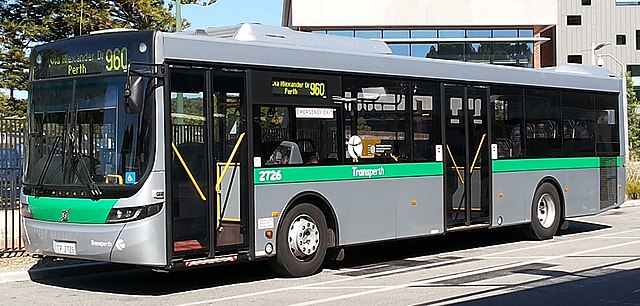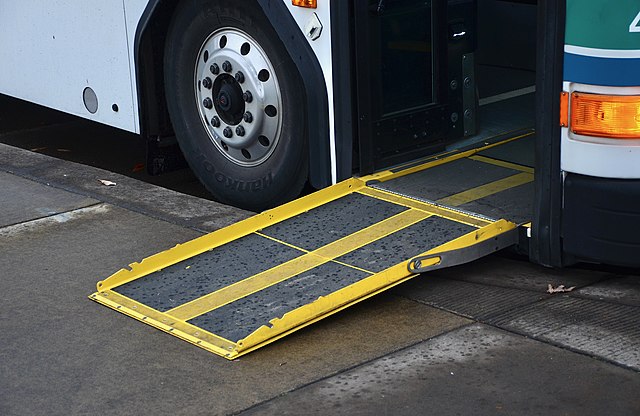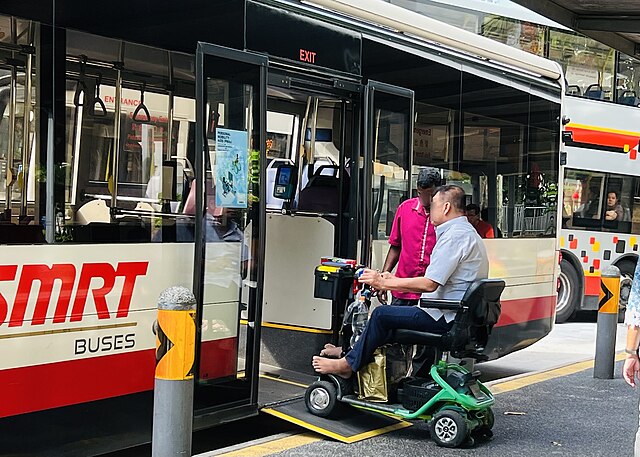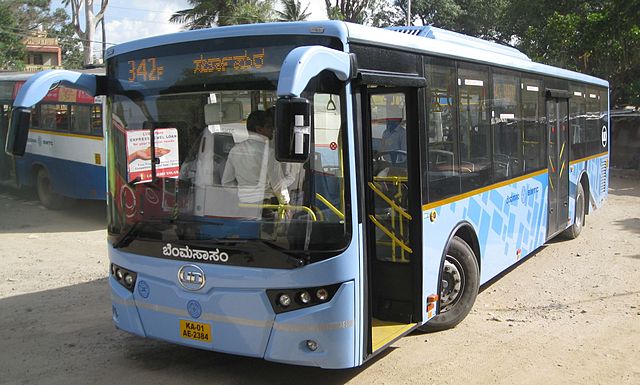Transbus was announced in December 1970 as a United States Urban Mass Transportation Administration (UMTA) program to develop improvements to existing transit bus design; at the time, the US bus market was dominated by the GM New Look and Flxible New Look buses, and bus ridership was declining. The improvements had been suggested earlier by the National Academy of Sciences in 1968 to improve operating costs, reduce pollution, and stimulate ridership, and included innovations such as a low floor for easier entry and seats cantilevered from the wall to expand passenger space.
Brock Adams (center), at a press conference while serving as a member of Congress (Sep 1976). Seated, L-R: John Brademas, Carl Albert, Adams, Thomas P. O'Neill, and John J. McFall.
Flxible Metro/870 (1976)
GM RTS-II (1975)
A low-floor bus is a bus or trolleybus that has no steps between the ground and the floor of the bus at one or more entrances, and low floor for part or all of the passenger cabin. A bus with a partial low floor may also be referred to as a low-entry bus or seldom a flat-floor bus in some locations.
A low-entry bus of Volgren Optimus bodied Volvo B7RLE in Australia.
Many low-floor buses feature extendable ramps.
A low-floor bus can provide accessibility for wheelchair users and those on personal mobility devices, often through the use of a wheelchair ramp.
A BMTC UD SLF bus







